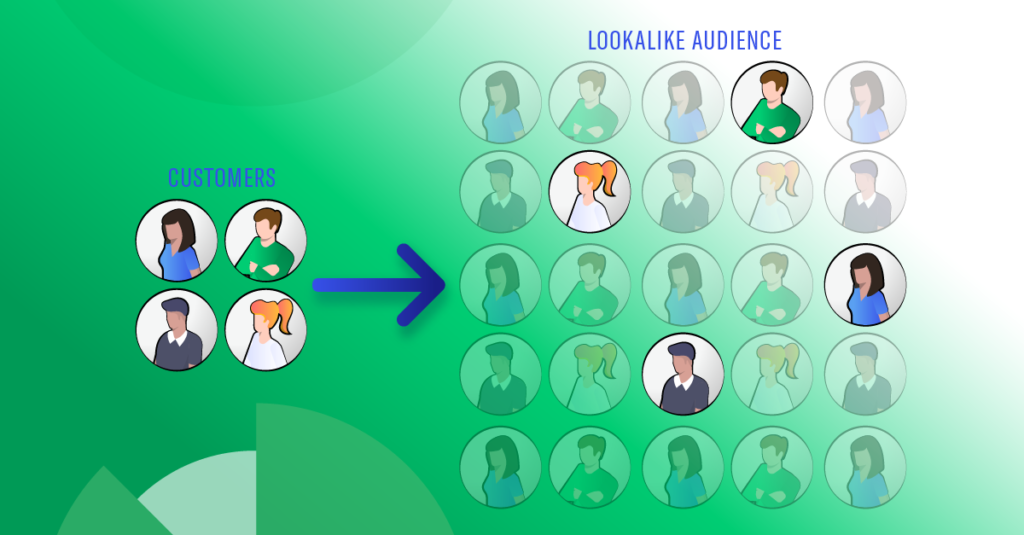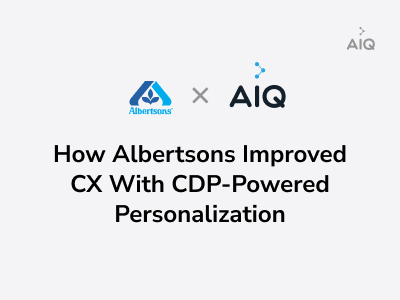The power of AI when defining and targeting audiences
October 21, 2021The customer acquisition challenge
It’s becoming increasingly difficult for marketers to attract and retain customers – and businesses are suffering financially. In fact, customer acquisition costs (CAC) increased by 60% between 2014 and 2019.
As CACs rise, businesses must change the way they view their customers and prioritize long-term relationships. As a result, businesses need to target the right audiences to kickstart a meaningful journey and increase customer lifetime value (CLTV).
But, identifying future high-value customers requires an intelligent approach. Marketers cannot simply select the parameters they assume will define a receptive audience. Instead, it is much more effective to analyze the top customers in their existing base using a look-alike modeling (LAM) approach.
Why? Well, look-alike modeling allows marketers to identify potential new audiences using precise, micro-segmented targeting. With this data, they can continue to engage their customers with personalized interactions and ultimately benefit from improved conversion rates and higher customer lifetime value. AI-led audience discovery holds a great deal of potential, and it’s time for businesses to take advantage.
Establishing audiences has traditionally been the realm of data scientists, but their limited availability means businesses must look elsewhere for a flexible and more self-reliant way to select their target customers. This is where artificial intelligence, which affords marketers a more experimental way to define new audiences, has a role to play.
Identifying audiences using AI-led criterion
Using look-alike modeling, businesses can target audiences who share similar characteristics, attitudes, and behaviors to their highest-value customers. By analyzing a broad selection of metrics, look-alike models create consistently evolving profiles that help businesses predict the customers who are most likely to be receptive to a product or service.
They combine a customer’s propensity to purchase a product with their intent to do so, creating an opportunity index that allows businesses to create super-targeted interactions that customers can truly benefit from.
We can look at pension saving plans as an example of how look-alike modeling helps marketers to not only identify potential customers using their existing data sets, but to provide contextually relevant experiences at the most impactful time. I’ve found that pension plan providers are more likely to see conversions when they target potential customers in households where a member already has a plan, compared to when they define audiences based solely on broader demographics, such as age. It’s this kind of intelligence that brands can benefit from by building AI-led micro-segmentation strategies, as opposed to relying on rigid macro-segmentation to guide their audience discovery.

Combining data with decision-making for truly individualized experiences
Essentially, the potential for businesses using look-alike modeling is to attract high-value audiences that will continue to appreciate relevant experiences over time.
Of course, this potential can only be unlocked by businesses that recognize the importance of personalization. It’s not enough to build audiences based solely on similar customer characteristics – marketers must also tailor their interactions to create truly individualized journeys.
Businesses must recognize that audience exploration is only part of the process of delivering personalized experiences. Once you have used LAM to create audience segments based on your existing customer base, the key is to create a hybrid solution that combines data insights with intelligent decision-making for offering a seamless customer experience.
Look-alike models may pinpoint potential customers based on the traits they share with your top audiences but putting their relationship with your brand into context is crucial to prevent a disjointed journey. For instance, customers are likely to become frustrated if they continue to receive offers and interactions after opening a complaint that hasn’t yet been resolved.
With this in mind, marketers should use look-alike modeling as they use a car’s cruise control, allowing it to empower rather than overpower their marketing strategies. Businesses should trust AI to support the audience creation process without relinquishing control altogether. After all, some processes cannot be programmed into an algorithm.
A sophisticated solution to audience creation
Nevertheless, the more sophisticated the insights analysis, the better-positioned marketers are to make intelligent decisions when defining audiences and targeting customers with personalized interactions.
Using a sophisticated CDP with look-alike modeling capabilities, such as NGDATA’s Intelligent Engagement Platform, businesses can benefit from advanced insights and propensity scoring. The Intelligent Engagement Platform’s Customer DNA also allows marketers to identify customers with a high opportunity index and build audiences based on these selections in real-time.
The Intelligent Engagement Platform combines responsive scoring with decision-making functionalities and uses look-alike modeling and clustering algorithms for a more precise audience exploration process. By using intuitive AI solutions to analyze both probabilistic and predictive data, the platform also enables businesses to target audiences with the most relevant interactions at exactly the right time.
To learn more about the Intelligent Engagement Platform and how it empowers businesses to create AI-driven marketing strategies, get in touch or learn more here.


